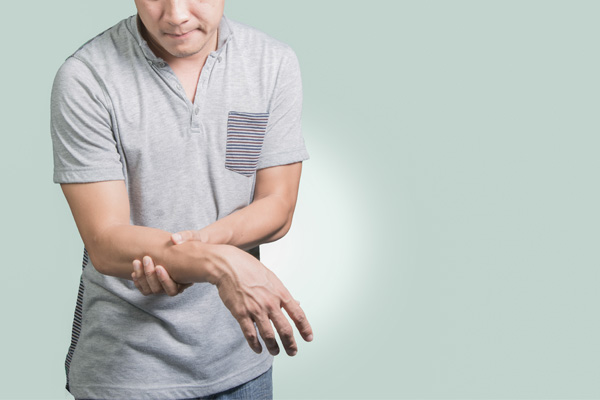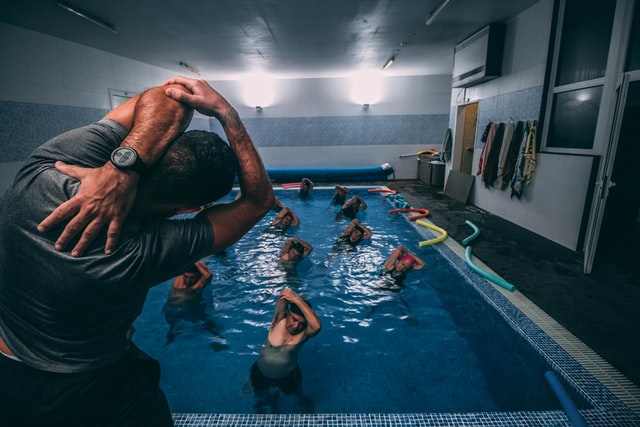The path to stroke recovery is usually very difficult and complex, this is further complicated by the fact that the recovery timeline is unique for every stroke survivor. In an effort to improve the rehabilitation of stroke survivors a Swedish physiotherapist, Signe Brunnstrom, created a framework that could highlight the different stages of stroke recovery. This framework;
- Details the various stages of recovery that stroke survivors progress through.
- The different changes that appear in each unique stroke recovery stage (spasticity and muscles synergies.
- Helps change our perspective on issues like spasticity and abnormal muscle development, this aspects are seen as parts of the stroke recovery process.

The stages of stroke recovery according to Brunnstrom are;
- Stage1: flaccid paralysis,
- Stage 2; appearance of spasticity, Stage 3; increased spasticity,
- Stage 4; decreased spasticity,
- Stage 5; complex movement patterns,
- Stage 6; disappearance of spasticity,
- Stage 7; Normal function.
| Stroke recovery stage | Characteristics of the recovery stage |
|---|---|
| Stage 1; Flaccid Paralysis | – Flaccid paralysis – No voluntary movement possible |
| Stage 2; Appearance of Spasticity | – Spasticity (high muscle tone) present – Little movement possible ( Either voluntarily or as a reflex) |
| Stage 3; Increased Spasticity | – Spasticity is very high – Voluntary movement possible along muscle synergies |
| Stage 4; Decreased Spasticity | – Spasticity is reducing – Some voluntary movement is now possible outside of the muscle synergies |
| Stage 5; Complex movement patterns | – Spasticity is very minimal and does not restrict movement – Multiple joints voluntary movement outside of muscle synergies is now possible. |
| Stage 6; Spasticity disappears | – Spasticity is not evident – Muscle synergies no longer interfere with movement |
| Stage 7; Normal function | -Normal function now fully restored |
Stage 1; Flaccid Paralysis.

This stage begins immediately after stroke. During this stage, the brain has been injured and there is no communication between the brain cortex and the muscles. Muscles will be paralyzed and will have low tone (hypotonia), attempts to perform voluntary movement will be unfruitful and there is no visible muscle contractions. Deep and superficial reflexes will also be diminished/absent.
If you’re in this stage you should;
- Take care of the paralyzed side to prevent complications such as shoulder subluxation/dislocation, deep vein thrombosis, edema. To do this ensure proper positioning, wear your shoulder brace and perform your passive range of motion exercises.
- Always perform your passive range of motion exercises. The passive range of motion exercises will lead to important brain changes that will help accelerate your rate of recovery into the next stage.
- Get a massage, massage will help to improve blood flow and also help stimulate the brain leading to important brain recovery changes. If you don’t have a physiotherapist to decide if a deep massage is safe for you, get a light massage. Massages should not be performed if you have; signs and symptoms of DVT (deep vein thrombosis) and deep massages should be avoided if you’re under blood thinners.
Rehabilitation Interventions to help you recover in stage 1;
Interventions that can help you progress quickly to the next stage include;
- Passive range of motion exercises
- Mirror Therapy
- Electrical Muscular Stimulation (Either independently or as even better when coupled with exercises)
- Thermal Stimulation ( Heat therapy/ Cryotherapy or mixed therapy)
- Soft tissue manipulation (Massage) and Cutaneous Stimulation (Brushing/Rubbing)
- Weight Bearing (Standing/ Arm weight bearing)
- Support (i.e. shoulder brace to prevent shoulder dislocation)
- Continuous deep tendon and muscle reflex stimulation
Stage 2; Appearance of spasticity.
In this stage, the brain has began healing and some neuronal connections between the brain and the muscles are being re-established. Stage 2 is characterized by the onset of spasticity. Spasticity refers to an abnormal increase in muscle tone/ muscle stiffness. Deep tendon reflexes will be exaggerated and the babinski reflex will be positive with some element of clonus.
Synergistic muscle movement is now possible and some movement can be observed either as a result of voluntary effort or as an accidental reaction to an initiated reflex. Understanding what muscle synergy is and the typical synergy patterns that exist after stroke is essential to understanding the stroke recovery journey.
A muscle synergy is the activation of a group of muscles to contribute to a particular movement.1 For example say you want to take a step forward, muscles from the hip, knee and ankle will all be activated at the same time in order to take the step. In stroke two major synergistic patterns exist, flexor synergy pattern and the extensor synergy pattern.
Check out the following video for more information on abnormal muscle synergy patterns after stroke;
Rehabilitation Interventions to help you recover in stage 2 ;
- Electrical muscular Stimulation in addition to exercises
- Active assisted Range of Motion Exercises where possible
- Stretching Program
- Weight Bearing
Stage 3; Increased spasticity
In this stage more spasticity appears and will continue to increase to the peak. For some stroke survivors in this stage, stroke spasticity might be so severe that it causes pain and limits movements. Deep tendon reflexes will even be more exaggerated and the other signs of upper neuron syndrome will persist even more.
Basic limb synergies, the flexor synergy and the extensor synergy can now be voluntarily performed. A good example of this will be the flexor synergy pattern for the lower limb; you might note that for a stroke patients hip flexion, hip abduction, hip external rotation, knee flexion, ankle dorsiflexion and inversion and toe dorsiflexion will all occur at the same time when the patient initiates hip flexion. This is the typical flexor synergy pattern observed in stroke survivors.
These synergistic patterns can be very helpful and might even help you walk again. Sadly most of the stroke survivors stagnate at this stage. After learning to walk again via these synergistic patterns they no longer perform further exercises hence do not progress to the next stage of recovery.
Rehabilitation Interventions to help you recover in stage 3;
- Botox injections (in the cases where spasticity is so severe that it inhibits all functional movement or causes severe pain)
- Active assisted range of motion exercises, perform lots and lots of repetition! (Repetition is the key to faster and better recovery )

- Stretching
- Weight bearing
- Task specific practice
- Muscle strengthening
- Orthotics i.e ankle foot orthosis in cases where there is severe calf spasticity .and knee hyperextension
- Home exercise program.
Stage 4; Decrease of spasticity
Now, if you’ve been putting those reps in, the brain continues to reorganize and the communication between the cortex and the muscles improves leading to the reduction in spasticity.
In this stage it is now possible to perform some movement outside of the synergistic patterns. Example, you might now be able to flex your hip and at the same time extend your knee (This is a movement outside the flexor synergy pattern). Remember, these changes occur after thousands and thousands of exercise practice repetitions.
Rehabilitation Interventions to help you recover in stage 4;
- Active forms of exercises
- Active range of motion exercises
- Aerobic exercises
- Motor control exercises
- Task Specific Exercises
- Strengthening Exercises
- Stretching
- Balance training
- Co-ordination training
Stage 5; Complex Movement Patterns
Now in this stage all factors considered you’re doing pretty good, the pay day is near! In this stage, you can now perform more complex movements. Voluntary muscle control is now possible in the multiple joints outside of the synergistic patterns. And you can now perform complex movements that require co-ordination and unique muscle activation patterns, i.e you can kick a ball with ease or you can use your upper extremity in feeding.
Spasticity causes very minimal resistance to movement.
Rehabilitation interventions to help you progress further to the next stage;
The rehabilitation interventions that can help you improve are similar to the ones in the previous stage;
- Active forms of exercises
- Active range of motion exercises
- Aerobic exercises
- Motor control exercises
- Task Specific Exercises
- Strengthening Exercises

- Stretching
- Balance training
- Co-ordination training
- Power training
- Fine motor skills training
Stage 6; Spasticity disappears
In this stage, spasticity disappears and doesn’t affect movement unless its elicited at very high velocities. More complex movements can be performed with ease and muscle synergies do not influence movement.
Only fine details remain, a few issues such as fine tuning the; gait, fine motor skills and balance.
Rehabilitation interventions to help you progress further include;
- Fine motor skill training
- Balance and coordination training
- Aerobic training
- Task Specific Practice
- Power training
Stage 7; Normal function returns
Normal function has been restored. All the effort you put in has finally paid off, give thanks and celebrate! You deserve it!

Key things to note;
The Brunnstrom stages of stroke recovery represent the stages that people who recover from stroke will progress through. Not every stroke survivor will progress through all the stages, some will stagnate in some stages of recovery. If this is you don’t give up! As long as you keep practicing the movements the potential for recovery will always exist. The brain is very powerful. Godspeed!